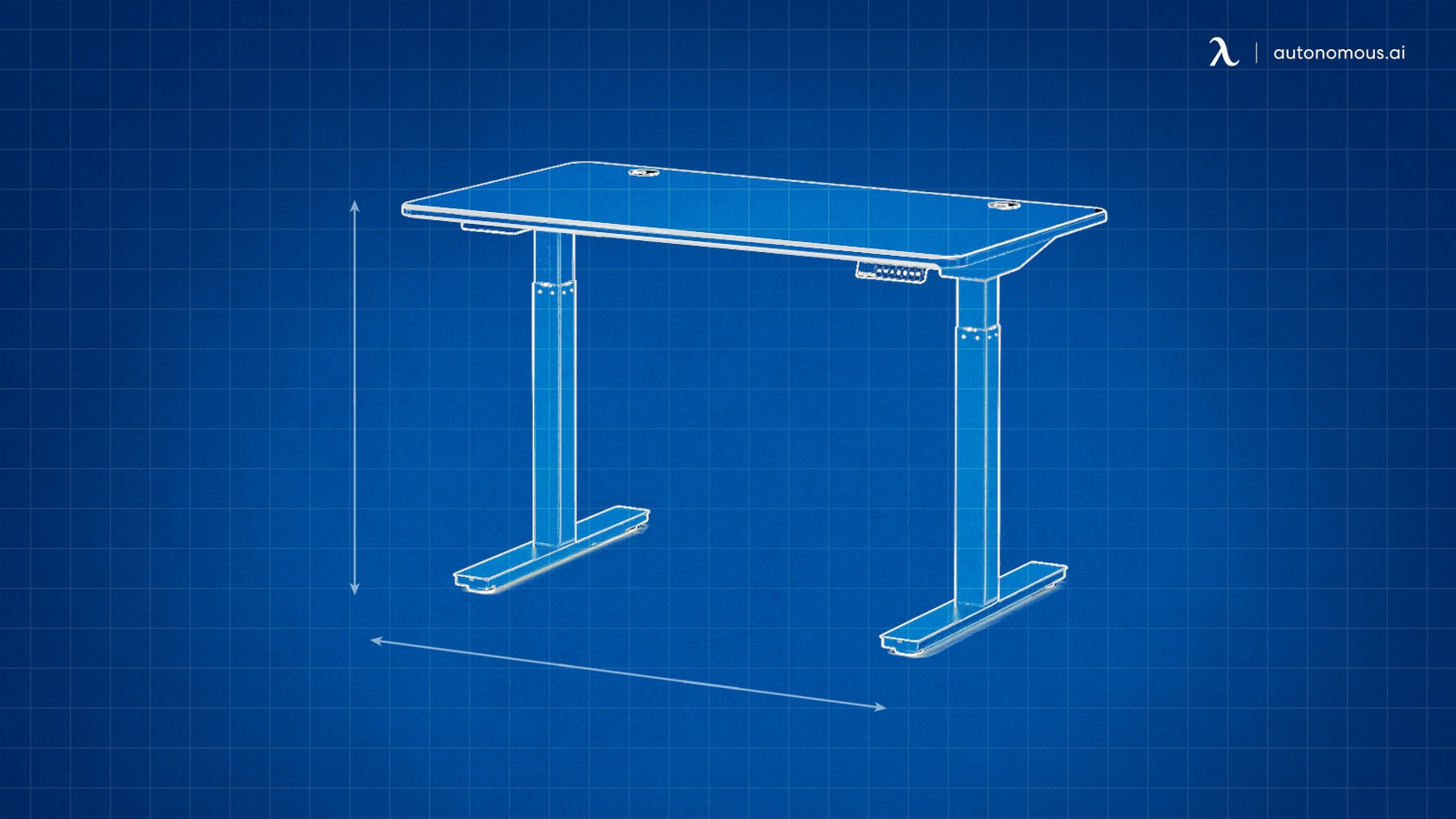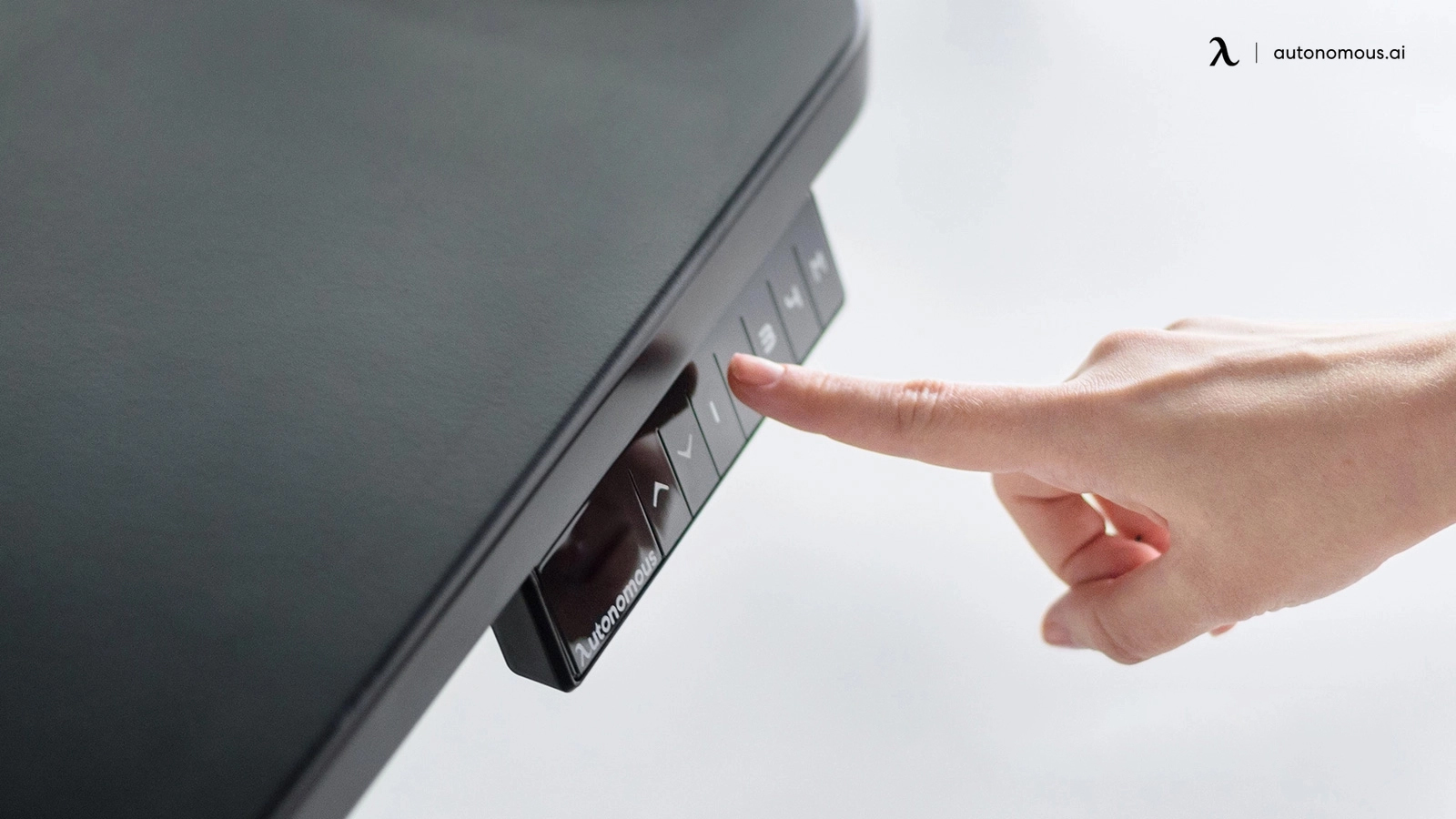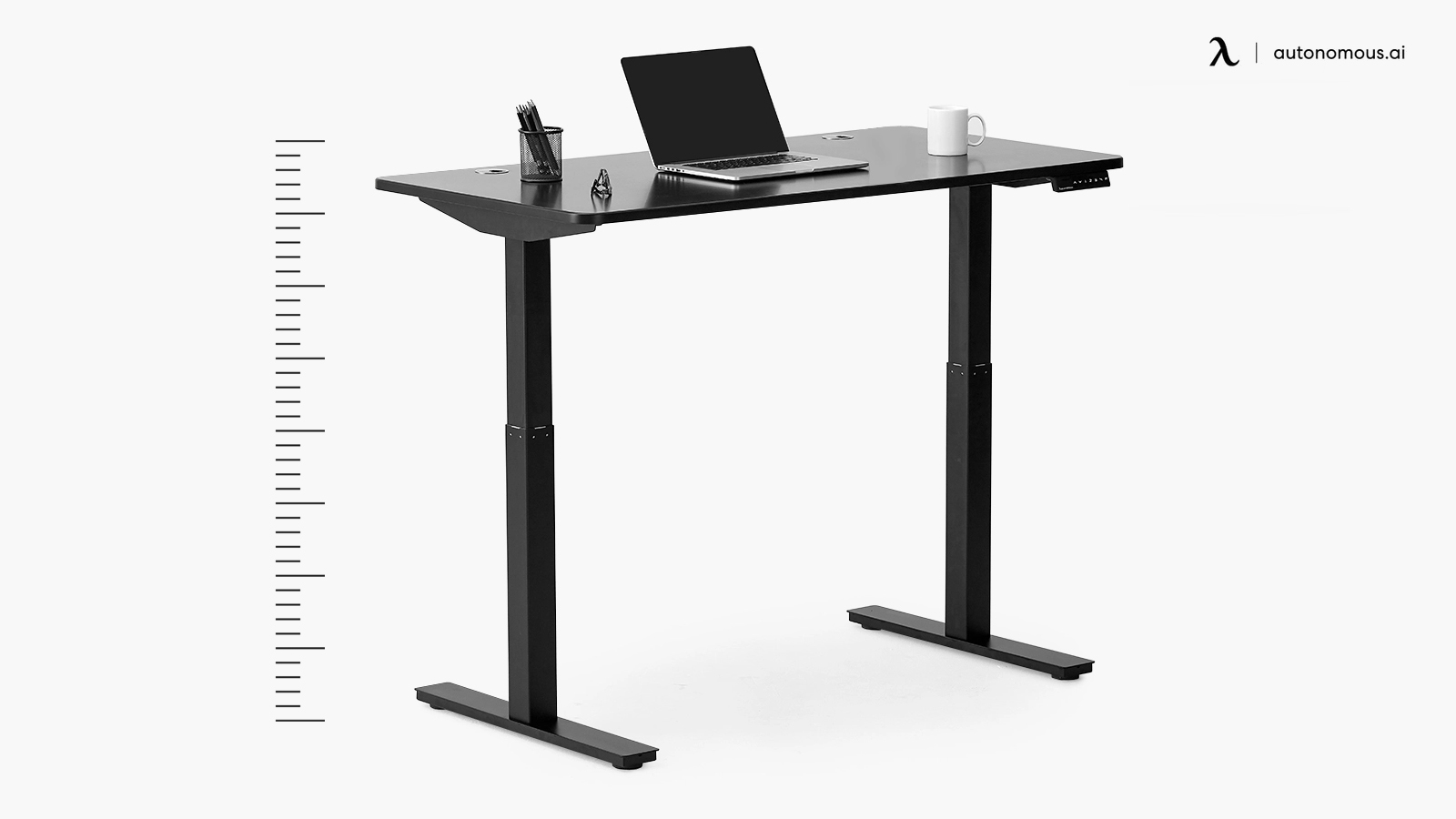
Pneumatic vs Electric: Which Makes for a Better Standing Desk?
Table of Contents
In the world of sit-stand conversion desks, there’s a war brewing behind the scenes. It’s a war between the fans of electric motors and the proponents of pneumatic pressure.
See, the desk needs to adjust up and down somehow. Different desks have different designs. Some of them use a crank and some gears to ratchet up the desk. Some of them use pneumatic pressure, similar to how your office chair can be adjusted up and down. Some of them use electric motors that raise or lower the height of the desk.
Since we live in the modern age and not the stone age, we’re disregarding hand cranks. Sure, you can get a workout raising and lowering your desk like it’s a car window from the 80s, but why would you? The other options are much easier, not to mention more readily available.
So really, the discussion comes down to two: pneumatics versus electrics. So which is better?
A Simple Answer
The simple answer is: whichever one you prefer. Both options have their pros and cons, and helping you decide is what the rest of this post is going to do. The fact is, neither one is truly 100% better than the other. If it was, you wouldn’t need a decision, you just wouldn’t have the option.
The Pros and Cons of Pneumatic
Pneumatic desks work similarly to how chairs adjust using a gas cylinder. It’s the same technology that exists in these chairs, just on a slightly larger scale. Pneumatic tubes are filled with gas. When the desk is lowered, that gas is compressed. When raised, the compressed gas expands, exerting pressure to make it easier to lift.
Gas springs are calibrated for the amount of weight they have to lift. If the gas inside was pressurized higher than it is, it would be very difficult to lower the desk or chair, and when raising it, it would spring up with significant force. How much force? Well, nail guns use pneumatic pressure to drive nails through wood and other surfaces. It can, potentially, be a lot of force. More than enough to launch everything on your desk across the room. Thankfully, the pneumatic tube in your desk is calibrated for the typical range of weights the desk and its contents typically weigh.
Pros:
First, let’s start with the pros of a pneumatic desk.
- A gas spring makes it very easy to raise or lower the desk manually to the position you want it. The spring, properly calibrated, makes the desk virtually weightless. You can, so long as you hold the lever down, you can usually lift or lower the desk with the pressure of a single finger.
- Pneumatics are quiet. Raising and lowering your desk is nearly silent. All you’re likely to hear is a little creaking from the frame and a slight hiss of gas. There are no motors to worry about.
- Pneumatic desks do not require electricity. They are carbon neutral, because they don’t consume resources to operate, and they’re not tethered down by cables or cords. Many pneumatic standing desks are on wheels, so they can be moved from place to place throughout the day. They can also be placed anywhere in a room, and don’t need to be near a power outlet to function.
Cons:
It’s not all upside with pneumatics; there are some cons to balance out the pros.
- Gas cylinders can lose pressure over time. This is especially true if you overload the desk so it’s close to its weight capacity. Gas springs can degrade and spring leaks, making it harder to adjust them, and they might not hold their position very well. Nothing is worse than working at a standing desk and watching it sink throughout the day.
- Motion can be jerky or abrupt if the balance is out. Pneumatic desks need to be balanced to raise or lower smoothly. If you have too much weight on them or the spring is poorly sized, it can be jerky to move it up and down. You also don’t have very precise movements with pneumatics; if you want to adjust it a quarter inch up or down, you might over-shoot and need to fiddle with it to get it in that sweet spot.
That’s it for the pneumatics; let’s take a look at electric desks next.
The Pros and Cons of Electric
Electric sit-stand desks use a gearing mechanism to raise and lower the desk. Typically, they use a motor attached to a gearbox that transfers the rotational power of the motor into vertical power to lift or lower the desk. These can range from a track gear and a worm gear to a complex gearbox system enclosed in a low-profile cylinder. Most of the time, this entire assembly is hidden inside the legs or central pillar of the desk, both to keep it out of sight and to prevent anything from getting caught in the gears.
Electric desks can be simple mechanisms with a button to raise and a button to lower it. They can also be smarter devices that are controllable with wireless apps, or with programmable heights and memory storage for raising and lowering your desk. A smart desk is a very precise tool and offers the best range of adjustments and convenience, but it may have some cons to consider too.

Pros:
Electric-powered desks have some definite pros compared to their pneumatic counterparts.
- Electric motors require zero effort to raise or lower the desk. The motor handles everything, all you have to do is press a button. Even on the simplest electric desks, pressing a button for a few moments is far less effort than even the smoothest pneumatic desk.
- The operation is completely smooth. Pneumatics can be abrupt and jerky, but an electric desk is a completely smooth, single-speed adjustment. This can be relevant if you have a monitor perched on the desk, or you keep a drink at the desk, or you have fragile knick-knacks balanced on it. Electric desks won’t even disrupt their balance.
- Smart desks can be programmed to reach specific heights every time. Once you dial in your desk to the precise height you want, both sitting and standing, you can set those heights as pre-sets for many electric desks. From there, all you need to do is press a button and wait for it to adjust, no picky tweaking necessary.
Cons:
Electric may have some great selling points, but there are also a few concerns you should keep in mind.
- Electric motors and gears can wear out over time. Similar to gas springs, electric motors can degrade and burn out over time. That said, they generally have thousands of hours of operation on them. That might not sound like a lot, but when you consider the time spent adjusting a desk is measured in seconds, it adds up to years of life.
- Potentially noisier than gas desks. Some electric motors have a distinct whine to them, and gears can grumble as they turn. However, many modern electric desks are near-silent in operation, so they’re often no noisier than a gas desk. It ultimately depends on the model that you purchase more than anything else - some electric desks are exceptionally quiet.
- Requires electricity to operate. An electric desk requires a power source to run the motor. That usually means the desk needs to be plugged in which can limit both its mobility and the places you can place it throughout a home or office. Of course, most of the time, you have a computer at the desk, so you need electricity anyway. It’s not that much of a burden.
That’s a good set of pros and cons, but there are some other considerations you might have as well.
Price Comparisons
You’ll notice that we didn’t mention the price of the desks in the pros and cons list. The reason is, there are high-cost and low-cost models for both types of desks. No matter what your budget is, you can find a desk that fits the style you're looking for that also meets your budget.
Are Electric Desks a Safety Hazard?
One footnote we’d like to make is addressing the safety concerns relating to electric desks. Some companies that sell pneumatic desks like to say that electric desks are a hazard; an electric motor can potentially burn out or start a fire, and the cord can be a fire or shock hazard. Is this true, though?
Well, not really. Yes, any time electricity is involved, the risk of an electrical accident can happen. If something slices your power cord open, it can blow a fuse. If you spill a big pot of water on sensitive components under your desk (however unlikely that scenario is), it could potentially cause some damage. The truth is that these things go without saying, and electric desks are no more hazardous than the computer you have sitting on that same desk, or the lamp you have plugged in next to it, or the television across the room. As with most things, use common sense and follow all safety precautions.
Another safety concern is the “automatic” nature of an electric desk compared to a pneumatic desk. A pneumatic desk doesn’t move unless you move it, whereas an electric desk has a button you can press and walk away while it adjusts itself. There’s a very slim chance that, in that intervening time, something fragile could get caught in the workings and be damaged, like a wire or something lodged under your desk.
While this could potentially happen, most electric desks have fail-safes in place. If they encounter resistance, they stop adjusting automatically to avoid breaking whatever object they’re pressing against (or the desks internal mechanisms themselves). Some basic electric standing desks aren't very different than pneumatic desks in that there's no safety features or smart features.
Overall, most of these safety concerns are overblown. Electric desks are just as safe as pneumatic desks, and may even be safer with the models that have built in safety features.
Making Your Decision
So which do you prefer, a gas or an electric desk? If you still can’t decide, we’ve produced a list of primary concerns you should review. Look at each of these categories, determine how important they are to you, and let them guide you to choosing the appropriate desk.
Height range. Ergonomics specify the height you should position your desk for ease of comfort and use. The specific height depends on your own height and will vary from person to person, but most desks will adjust well within the minimum and maximum range. At the low end, most desks sink down to 22.5” off the floor. At the high end, they raise to about 48-49” off the floor. Very tall individuals may need a desk that raises higher. Neither electrics nor pneumatics win out in this category, it all depends on the specific model you’re looking at.

Weight capacity. How much stuff are you putting on top of your desk? It’s one thing to put a computer, a few accessories, a phone, and some paperwork on it. It’s quite another to lean on it and have it support everything and your weight. Electric desks tend to be rated for between 200 and 350lbs of capacity. By contrast, pneumatic desks only have a capacity of around 30-50lbs. Electric motors are simply stronger, whereas gas cylinders need to be properly balanced and counterweighted to raise and lower properly.
Noise. The noise rating for a desk depends on the specific model. In general, pneumatic desks are going to be relatively quiet. Over time, they can develop squeaks and groans when adjusted, but won’t make much noise in general. Electric desks can be extremely quiet, little more than a dull hum when adjusting. Some low-end electric desks are louder, though, and if a motor degrades over time, it can make grinding noises when adjusting.
Ease of adjustments. How easy is it to move your desk from sitting to standing, or to adjust it in small amounts? Electric desks are easier than pneumatics because all you need to do is press a button. Programmable electric desks can be very precise, and you can make minuscule adjustments with ease. Pneumatic desks can be easy to raise and lower from fully down to fully up, but any position in the middle can be more difficult to reach with precision.
Advanced functionality and programmability. Pneumatic desks are purely mechanical. They don’t have computers or electronics doing any of their adjustments. Electric desks can be simple, with just an up and a down button and nothing else. Smart desks, meanwhile, can have a range of additional functions. If multiple programmable heights, remote adjustments, app controls, or other smart features are a selling point for you, you’ll need to go with an electric desk.
.svg)







